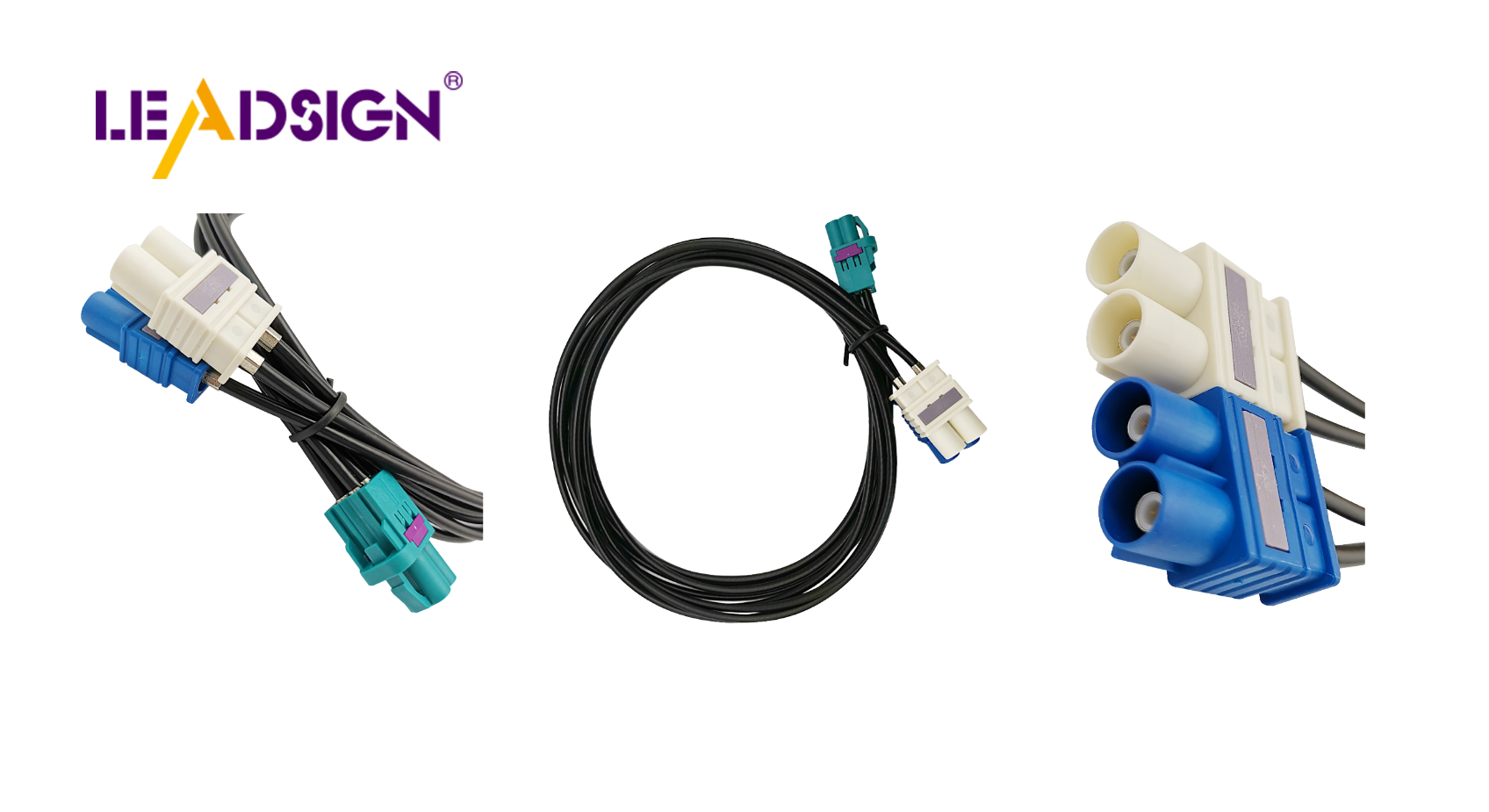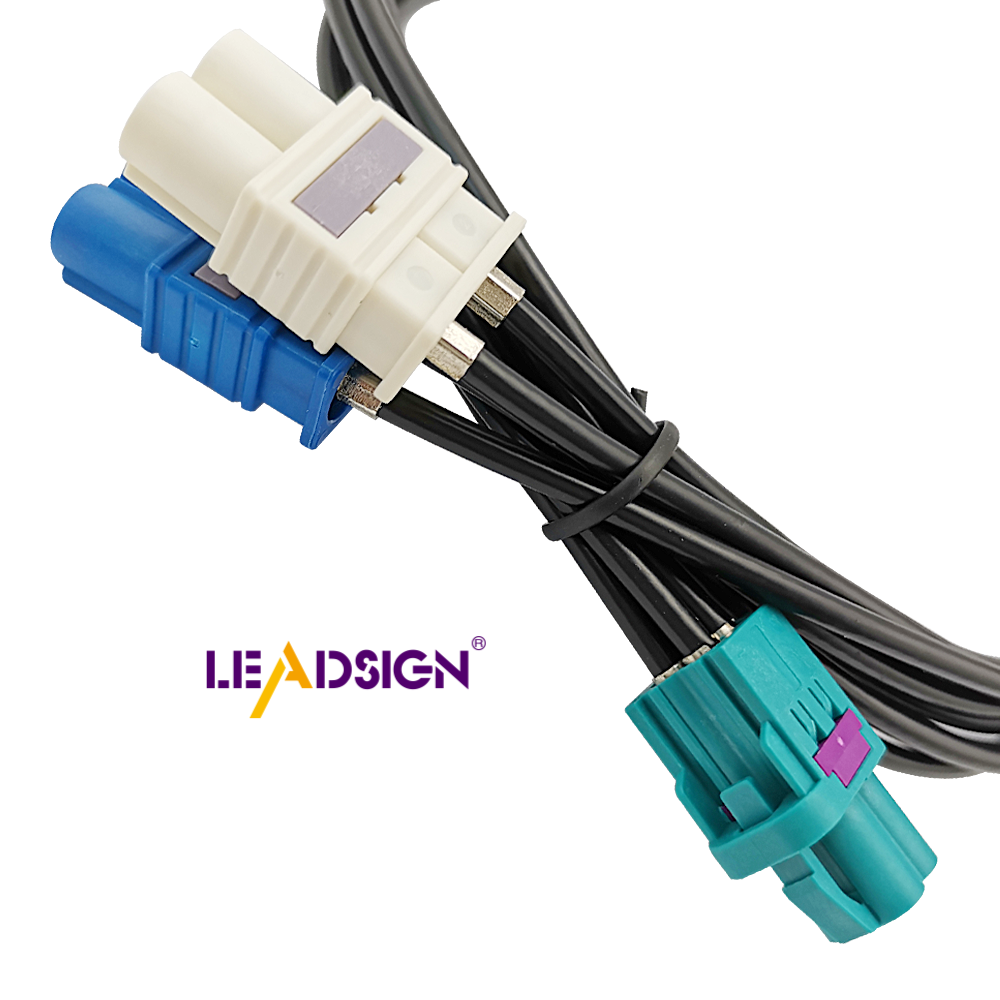50 Ohm Coax Cable Types and Their Role in Communication Systems

You often see 50 ohm coax cable types in communication systems. These cables help send signals effectively. They are stronger than 75 ohm cables, making them ideal for two-way radio signals. You can find them in wireless systems and RF tests. Their design minimizes signal loss, which is crucial for data transmission and wireless communications. Choosing the right 50 ohm coax cable type can significantly enhance your system's performance.
Understanding Coaxial Cables
Structure and Function
Parts of Coaxial Cables
Coaxial cables have a special build. They have layers that help send signals well. In the middle, there's a conductor made of copper or aluminum. This part carries the signal. Around it is an insulating layer. This keeps the signal inside. Then, there is a shield around the insulation. The shield stops outside noise from messing with the signal. Finally, an outer jacket covers everything to keep it safe.
How Coaxial Cables Send Signals
Coaxial cables use the inner conductor to move electric currents. These currents are data or video signals. The insulating layer keeps these signals in place. The shield stops electromagnetic noise from getting in. This setup helps coaxial cables send clear signals with little loss. They work well for many uses.
Importance of Impedance
What is Impedance?
Impedance is key to understanding coaxial cables. It means how much a cable resists electric flow, measured in ohms. Impedance affects how well signals travel through a cable. In coaxial cables, impedance helps signals move smoothly from start to end without losing strength.
Why 50 Ohm is Common in Communication
You might ask why 50 ohm impedance is common in communication systems. It's because it's flexible and works well. 50 ohm coaxial cables are great for medium power places and handle high-frequency signals nicely, making them good for RF tasks. They're used a lot in wireless talk, broadcasting, and sending data because they cut down on signal loss and noise interference effectively.
50 Ohm Coax Cable Types

RG Series
What is the RG Series?
The RG Series is a group of coaxial cables. They are used in many communication systems. These cables are known for being strong and useful. They have different impedance ratings, but 50-ohm ones are popular for RF tasks. RG cables have a metal shield outside. This makes them flexible and tough. They can be made fast and cheaply.
Common RG Types and Their Uses
RG-6 Cables: You see RG-6 in TV and satellite setups. They send signals far with little data loss. Though usually 75-ohm, they are strong for high bandwidth jobs.
RG-11 Cables: These are thicker for long-distance sending. Great for big data jobs like network backbones or video systems far away.
RG-316 Cables: Known for low signal loss, these are good for LANs and WANs. They balance performance well, making them great in networks.
LMR Series
What is the LMR Series?
The LMR Series has coaxial cables made for wireless talks. These cables bend easily, last long, and work well in tricky systems. You find LMR in radio or cell phone networks often. Both 50-ohm and 75-ohm versions exist, but 50-ohm ones work best in RF tasks.
Why Choose LMR Cables?
Flexibility: LMR bends easily to fit tight spots without losing quality.
Durability: Built to handle tough conditions, they last long.
Reliability: They give steady signals, perfect for important communication needs.
Uses in Communication Systems
Wireless Communication
Role in Cell Networks
Cell networks help you talk easily. 50 Ohm coax cables are important here. They link antennas to base stations for good signal flow. These cables manage high signals, making them great for mobile phones. Their strong build keeps signals clear and fast.
Use in Wi-Fi Systems
Wi-Fi uses 50 Ohm coax cables too. You use Wi-Fi at home, work, and public places. These cables join routers to antennas for steady links. They support fast data, so downloads are quick and streaming is smooth. They cut interference, perfect for busy spots with many devices.
Broadcasting
TV and Radio Signals
For broadcasting, you get clear TV and radio thanks to 50 Ohm coax cables. They move signals from studios to transmitters, then to your screens or radios. They handle lots of power for long distances without losing quality.
Satellite Communication
Satellites need 50 Ohm coax cables for data transfer. Satellites give you GPS and weather info. These cables link ground stations to dishes for exact signal travel. Their high-frequency handling makes them great for satellites.
Data Transmission
Internet and Networking
For internet, 50 Ohm coax cables are key. You see them in LANs and WANs connecting servers and routers fastly and reliably. Their low loss helps with speedy internet so you can browse or stream well.
Industrial and Commercial Uses
In factories or offices, 50 Ohm coax cables connect machines or sensors smoothly even in tough conditions. They're strong and flexible which helps businesses work better.
Advantages and Limitations
Benefits of Using 50 Ohm Coax Cables
Signal Strength and Trustworthiness
50 Ohm coax cables keep signals strong. They handle high signals with little loss. This is great for places needing clear signals. In wireless systems, they keep signals strong over long ways. Their tough build stops outside noise, making them reliable.
Many Uses
50 Ohm coax cables work in many places. Use them in factories or offices where more power is needed. They are good for tests and wireless systems too. They handle high power well, better than 30 or 60 Ohm cables. This makes them a top choice.
Possible Downsides
Price Issues
50 Ohm coax cables cost more than 75 Ohm ones. Their thick design adds to the price. If your place isn't ready for them, setting up can be hard and costly too. Think about this when choosing cables.
Weather Effects
Weather can change how these cables work. Don't put them in very hot or wet spots. Though strong, bad weather can harm them over time. Good setup and care help them last longer.
Picking the right 50 Ohm coax cable is important. Think about what you need, like signal strength and distance. Cables like RG-6 or RG-11 have special uses. Look at what each type can do well and not so well. This helps signals move better. Knowing these things helps you choose wisely for a strong system.
See Also
Why FAKRA Coaxial Cables Matter in Automotive Uses
Exploring the Advantages and Flexibility of FAKRA Connectors
Harnessing the Strength of FAKRA Coaxial Cables

